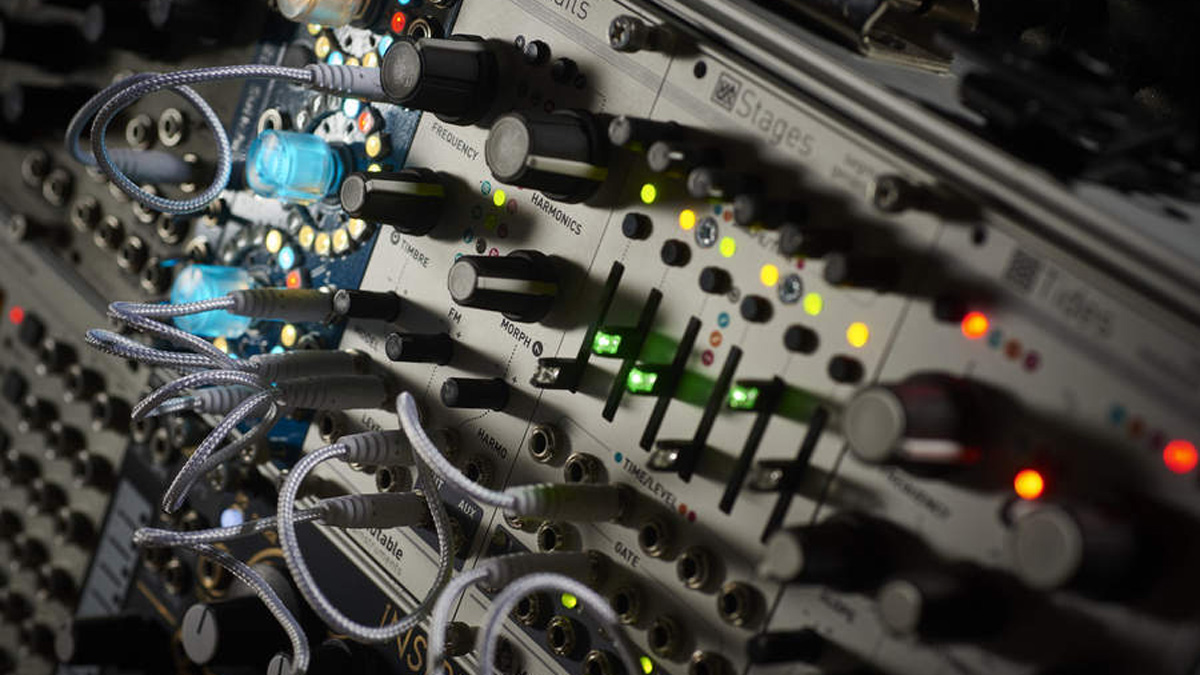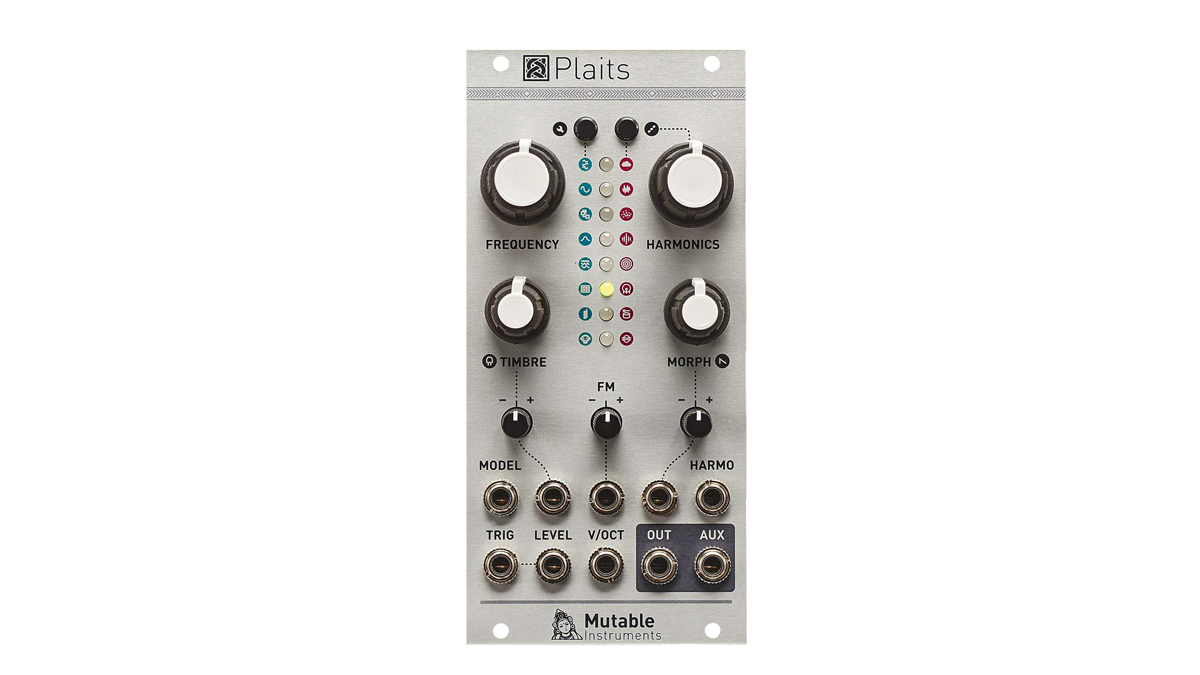MusicRadar Verdict
Huge sound possibilities in a small module. Perfect for a small system but equally useful in a monster rig. Everybody needs one.
Pros
- +
A full, wide-ranging synth voice in 12hp.
Cons
- -
No built-in quantiser.
MusicRadar's got your back
For the first of Mutable Instruments’ new line-up, Olivier GIllet has gone back to the drawing board to offer a successor to the mighty Braids, his flagship digital oscillator.
Braids changed the game in 2013 by offering a virtual museum of modelled synthesis types in one module. With basic filtering and a VCA built-in, Braids offered a quick, ready-to-go synth voice, and became a hugely popular module. But things have moved on, DSP power has increased and many people’s focus has shifted to smaller complete systems and therefore more compact modules.
So Plaits is here, offering the same basic principle but with a complete overhaul in both design and programming and a significant drop in price. Plaits is 4hp smaller with a greater focus on ergonomics and playability; the first thing you’ll notice is that the screen has gone. Although straightforward, scrolling through Braids’ menu system could be laborious and Plaits instantly feels more immediate without it.
The layout is well designed with just four main knobs that are well spaced and easy to wiggle. One is for the pitch while the other three control different elements of the timbre. The use of these vary depending on the model but soon become intuitive and offer a very immediate interface for tweaking the sounds. Between them they give access to a huge variety of timbres and tones.

Braids AD envelope is replaced in Plaits with a Low Pass Gate simulation with adjustable decay length and brightness. As these require you to hold a button while turning a knob, they are really set-it-and-forget-it controls. If you want hands-on or CV control of the amplitude, you’ll need a separate envelope module but you can plug straight into the level input so you won’t necessarily need a VCA. The LPG envelope is also normalled to the different CV inputs, meaning you can adjust the amount of envelope fed through the attenuverter when the socket is unpatched. This is really useful for bringing variety to the sounds without the need for external modulation. The LPG does rely on the trigger input so unfortunately it’s not possible to use its envelope as a modulator without also using it as a volume control.
There are eight synthesis models for pitched sounds and eight for noise and percussion. These are notated by a vertical row of LEDs down the centre of the module and stepped through with a button for each set. You can also use the CV input to automate the model changes or use a separate voltage source for ease. The trigger input provides a sample & hold function when changing the synthesis type, so the model is fixed until the next trigger pulse is received.
Plaits also offers CV inputs for the three timbre controls and FM, and attenuverters for everything apart from the Harmonics knob (we guess they just ran out of space).
Want all the hottest music and gear news, reviews, deals, features and more, direct to your inbox? Sign up here.
There are two outputs, with the Aux offering an alternate version of the current model. In a lot of cases this can be used as a makeshift stereo pair with each output panned hard left and right. In other modes the Aux provides a sub oscillator or a bitcrushed version of the main signal. We got extra mileage from Plaits by using a crossfader module to easily mix the two outputs but you could also use a normal mixer for the same task.
Plaits reduces the number of synthesis modes from Braids 43 down to a far more manageable 16. But through clever design it doesn’t lose any breadth, instead offering a more focused way of accessing the same range of sounds. For example, in Braids there were three FM modes, while in Plaits, all of these modes exist within one mode. You control the feedback path with a knob and they’re all available via that one knob. Not only does that make the interface simpler, it offers a greater range of morphable sound.
So how does it sound compared to Braids? Well the synthesis engine is completely rewritten, getting better audio quality out of a lower sample rate, and it does sound noticeably better. Smoother and less digital, particularly in the high end. In short, it sounds fantastic.
Let’s look at the pitched sounds on offer. As with Braids, you get a collection of different synthesis types: classic detuned waves, wave-folding, additive, two operator FM, formants, speech, chords, wavetable, etc. The wavetable mode is better organised than that of Braids, with the waves following more obvious progressions, making the morphing smoother and more natural. In this regard it has more in common with the use of wavetables in Sheep (Tides v1 alternate firmware). Chord mode is a favourite, with lots of timbres, from drawbar organs to string machines. Poly voices are becoming more popular in Eurorack but it’s useful to have a great voice for four note chords in such a small size. While writing this review, we’ve been listening to a slowly morphing chordal drone with Plaits being played by Marbles; it just doesn’t get boring.
The noise options include a Super Saw oscillator and a mini version of Rings along with several flavours of noise, and the built-in LPG makes it easy to use these as percussion sources. Plaits also offers kick, snare and hi-hat models based on classic drum machines. These are far better than the drum sounds on Braids; the kick is pretty usable but I couldn’t get much snap out of the snare. We prefer the one on Peaks.
As a full synth voice, Plaits is perfect for a live system, with a host of easily-accessible tweakable sounds and a simple playable interface. The pitched models offer a great range of synthesis types with lots of sweet spots. The addition of the noise and percussion sources and the fact you can also use it as an LFO means it will always find a place no matter how deep your patching gets.
